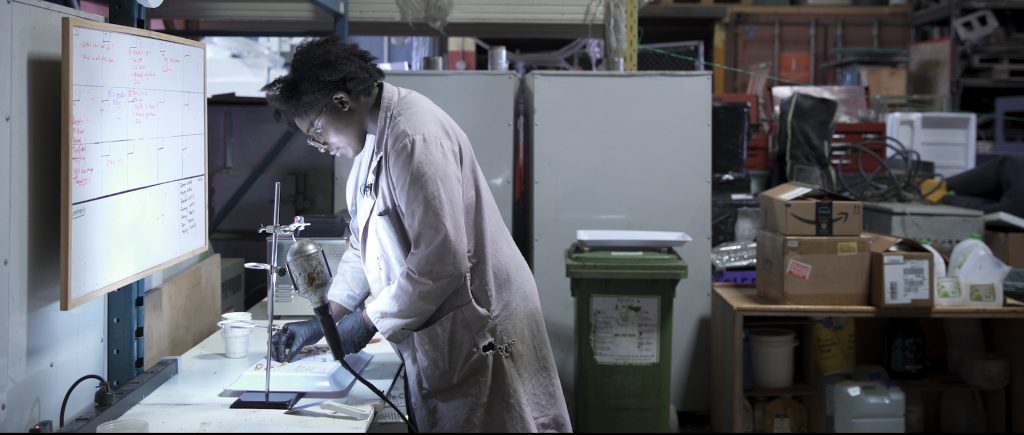A sustainable plastic researcher shares insights into the transition to a circular economy
Love-Ese Chile is a sustainable plastic researcher based in Vancouver, who completed her doctoral thesis on biodegradable plastics at the University of British Columbia in 2017. During her studies, Chile became a vocal supporter of sustainability, green chemistry and community-driven science. In 2018, Chile started a research consulting company, Grey to Green Sustainable Solutions, that works with local businesses, not-for-profit groups and policy-makers to increase understanding of the sustainable plastic supply chain and develop new technologies that will allow plastics to transition into a circular economy. 10,000 Changes spoke with her about her unique perspectives on this challenge.
On the major misconception the public has about recycling plastics
There is a major misunderstanding of the currently reported recycling rates. For us to have truly effective recycling systems, we need to both collect used plastics, as well as convert these plastics into new products. Many recycling rates only measure how much we are collecting, but do not measure how much of that collected material gets converted into products of equal or greater value. The reality is that a lot of collected plastics end up going to waste-to-energy facilities or landfills.
On why only a small percentage of plastic water bottles are used in the making of new ones
When a large variety of bottles are ground up and melted, the additives included in plastic resins also mix and mingle. Because the mixture is unknown, the resulting plastic often has less than ideal strength and other material properties. This means that recycled plastic can’t always be used in the same application as the original plastic, and instead is used in products of lesser value (called down-cycling). The unknown plastic mixture that results from the recycling process could also potentially contain harmful contaminants. In some cases, food safety regulations don’t allow recycled plastic to be used to keep people safe.
On the eco-friendliness of bioplastics
This is a very complicated issue. Plastics are used in all industries and in a huge variety of products and processes. The concept of “eco-friendliness” and “sustainability” mean different things in each of these various applications. What bioplastics offer is the ability to use renewable, plant-based materials to help in the transition away from fossil-based resources. It is important to ensure that any plants used to make plastics are sustainably grown. Designing a product made from bioplastics also offers opportunities to tap into more diverse waste management systems, including composting and anaerobic digestion. This will help reduce the amount of plastic pollution entering our ecosystems and ensure we retain the value of our materials. However, ensuring every city and town has access to services and facilities that can collect and convert these products is central to their success.
On the difference between bio-based plastics and biodegradable plastics
Bio-based plastics are plastics that are made from biomass. Bio-based plastics include natural plastics, which can be directly extracted from plants and other biological sources such as cellulose, spider silk and chitin. Bio-derived plastics are made from building blocks that were extracted from biomass through biochemical treatment. Biodegradable plastics are plastics that can be eaten by microbes to form carbon dioxide and water. Biodegradation depends on the environment that a plastic finds itself in, and the best biodegradation of plastic occurs in large-scale compost facilities. This is why it is important to only use plastics that are certified compostable. There is a lot of overlap between these two groups. Some bio-based plastics are not biodegradable or compostable and some fossil-based plastics are biodegradable and compostable.
On the creation of truly biodegradable plastics
Creating a truly biodegradable (or compostable) plastic requires more than just making a new type of plastic. It also means creating the waste management infrastructure to collect and convert these materials back into compost or some other type of valuable product. Currently there is a wide variety of plastic with the potential to be truly useful and sustainable, however there is no common mechanisms to degrade these plastics and ensure the production of nutrient-rich compost. We need to focus on how we can improve and expand our waste management systems to include this new class of materials and explore new technologies to control their biodegradation in different environments.
On the fundamental problem in dealing with the recycling of plastics
We live in a society of unbridled consumption. We extract raw materials from the Earth, then use them for a very short time before disposing of them in a manner where their value is trapped, unable to return into their natural cycles. It’s time for us to rethink our priorities and find ways to reduce the amount of resources that are wasted in our systems. By supporting local production and consumption, leveraging innovation in waste management and resource recovery and investing in the sharing and circular economies, we’ll be able to ensure we maintain the value of plastic and other materials.


